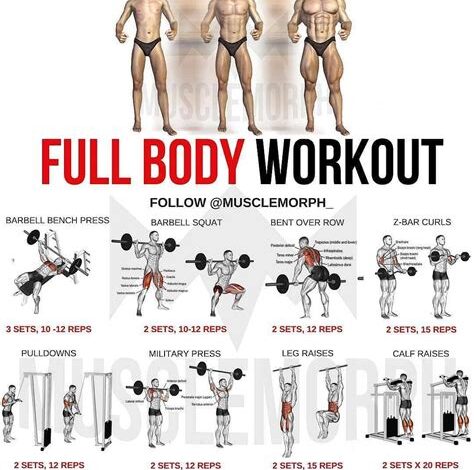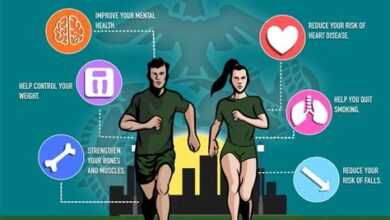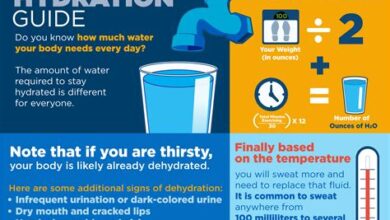Top 10 Exercises for a Full-Body Workout

Discover the benefits of full-body workouts and learn about cardiovascular, strength training, flexibility, and balance exercises for a complete fitness routine.Are you looking for a workout routine that will target all muscle groups and help you achieve a full-body transformation? Look no further! In this blog post, we will explore the top 10 exercises for a full-body workout, covering everything from cardiovascular exercises to strength training and flexibility and balance exercises.
In the introduction, we will discuss the importance of full-body workouts and how they can benefit your overall fitness. Then, we will delve into the specific benefits of incorporating full-body exercises into your routine, including improved strength, endurance, and flexibility.
Next, we will explore the best cardiovascular exercises for a full-body workout, followed by a deep dive into strength training exercises that will engage all major muscle groups. Finally, we will discuss the importance of flexibility and balance exercises for a well-rounded fitness routine.
By the end of this post, you will have all the information you need to create a comprehensive full-body workout that will help you reach your fitness goals. Let’s get started!
Introduction to Full-Body Workouts
When it comes to fitness, there are many different exercise routines and workouts that focus on specific muscle groups or areas of the body. However, full-body workouts are a great way to target multiple muscle groups at once and improve overall strength and conditioning. Full-body workouts involve exercises that work the upper body, lower body, and core all in one session, making them a time-efficient and effective option for many people.
One of the key benefits of full-body workouts is that they can help improve cardiovascular health, build muscle strength, and enhance flexibility all at the same time. By engaging multiple muscle groups in one session, you can maximize your workout time and see results more quickly. Additionally, full-body workouts can be adapted to fit a variety of fitness levels and can be customized to focus on specific areas of strength or weakness.
Whether you’re new to full-body workouts or are looking to enhance your current routine, incorporating a combination of cardiovascular exercises, strength training exercises, and flexibility and balance exercises can help you achieve a well-rounded and effective workout. In the next subheadings, we will explore the specific benefits and exercises for each of these components of a full-body workout routine.
Benefits of Full-Body Exercises
Full-body exercises are a great way to improve overall muscle strength and endurance. When you engage in workouts that target multiple muscle groups at the same time, you are able to maximize your time and effort in the gym. These types of exercises also help to improve coordination and balance, as you are required to engage multiple muscle groups to perform the movements effectively.
Another benefit of full-body exercises is that they help to increase your metabolism, leading to greater calorie burn and potential weight loss. By engaging in compound movements that target several muscle groups at once, you are able to increase the efficiency of your workouts and maximize calorie burn. This can be especially beneficial for individuals looking to improve their overall fitness and achieve their weight loss goals.
Additionally, full-body exercises can help to improve functional strength and mobility, which are essential for everyday activities and injury prevention. By incorporating exercises that mimic real-life movements, you are able to improve your overall physical abilities and reduce the risk of injury during daily activities. This can be especially beneficial for older adults looking to maintain their independence and mobility as they age.
Cardiovascular Exercises for Full-Body Workout
Cardiovascular Exercises for Full-Body Workout
Cardiovascular exercises are a crucial component of a full-body workout routine. These exercises are designed to get your heart rate up and increase your overall endurance. When done correctly, cardiovascular exercises can help improve your cardiovascular health, increase your lung capacity, and burn calories to aid in weight loss.
Some popular cardiovascular exercises for a full-body workout include running, cycling, swimming, and jumping rope. These exercises engage multiple muscle groups simultaneously and can help you achieve a toned and balanced physique. Additionally, incorporating cardiovascular exercises into your fitness routine can help reduce the risk of chronic illnesses such as heart disease, diabetes, and obesity.
It’s important to remember that cardiovascular exercises should be performed at a moderate to high intensity in order to reap their full benefits. Aim to engage in at least 150 minutes of moderate-intensity or 75 minutes of high-intensity cardiovascular exercises each week to maintain a healthy heart and overall fitness level.
Strength Training Exercises for Full-Body Workout
Strength training is an essential component of a full-body workout routine, as it helps to build and tone muscles, increase metabolism, and improve overall strength and endurance. Incorporating strength training exercises into your workout regimen can help you achieve a well-rounded fitness level and target multiple muscle groups simultaneously. By engaging in strength training exercises, you can work on both upper and lower body muscles, allowing for a more thorough and effective workout.
Some popular strength training exercises for a full-body workout include squats, lunges, deadlifts, bench presses, and push-ups. These exercises target major muscle groups such as the legs, back, chest, and arms, providing a comprehensive and balanced workout. By regularly performing these strength training exercises, you can improve muscle tone, increase bone density, and enhance overall physical performance.
In addition to traditional weightlifting exercises, incorporating resistance bands, kettlebells, and bodyweight exercises can also be effective for full-body strength training. These versatile tools and methods can add variety to your workouts and challenge your muscles in new ways, leading to greater strength gains and improved muscular endurance. Whether you are a beginner or experienced fitness enthusiast, including strength training exercises in your full-body workout routine can help you achieve your fitness goals and maintain a strong and healthy physique.
Flexibility and Balance Exercises
Flexibility and Balance Exercises
When it comes to achieving a full-body workout, it’s important to include exercises that focus on flexibility and balance. These types of exercises not only help to improve range of motion and prevent injury, but they also contribute to overall strength and stability. Incorporating flexibility and balance exercises into your workout routine can also lead to better posture, enhanced athletic performance, and increased mind-body awareness.
One key exercise for flexibility and balance is yoga. Yoga incorporates a variety of poses and movements that challenge your balance and promote flexibility throughout the entire body. Whether you’re holding a standing pose, twisting into a deep stretch, or balancing on one leg, yoga helps to improve overall flexibility and balance while also promoting relaxation and stress reduction.
In addition to yoga, incorporating Pilates into your workout routine can also contribute to improved flexibility and balance. Pilates focuses on controlled movements and proper alignment, helping to enhance core strength and stability while also improving flexibility and balance throughout the entire body. Whether you’re performing leg circles, the teaser, or the roll-up, Pilates exercises are designed to challenge and improve your balance and flexibility.





